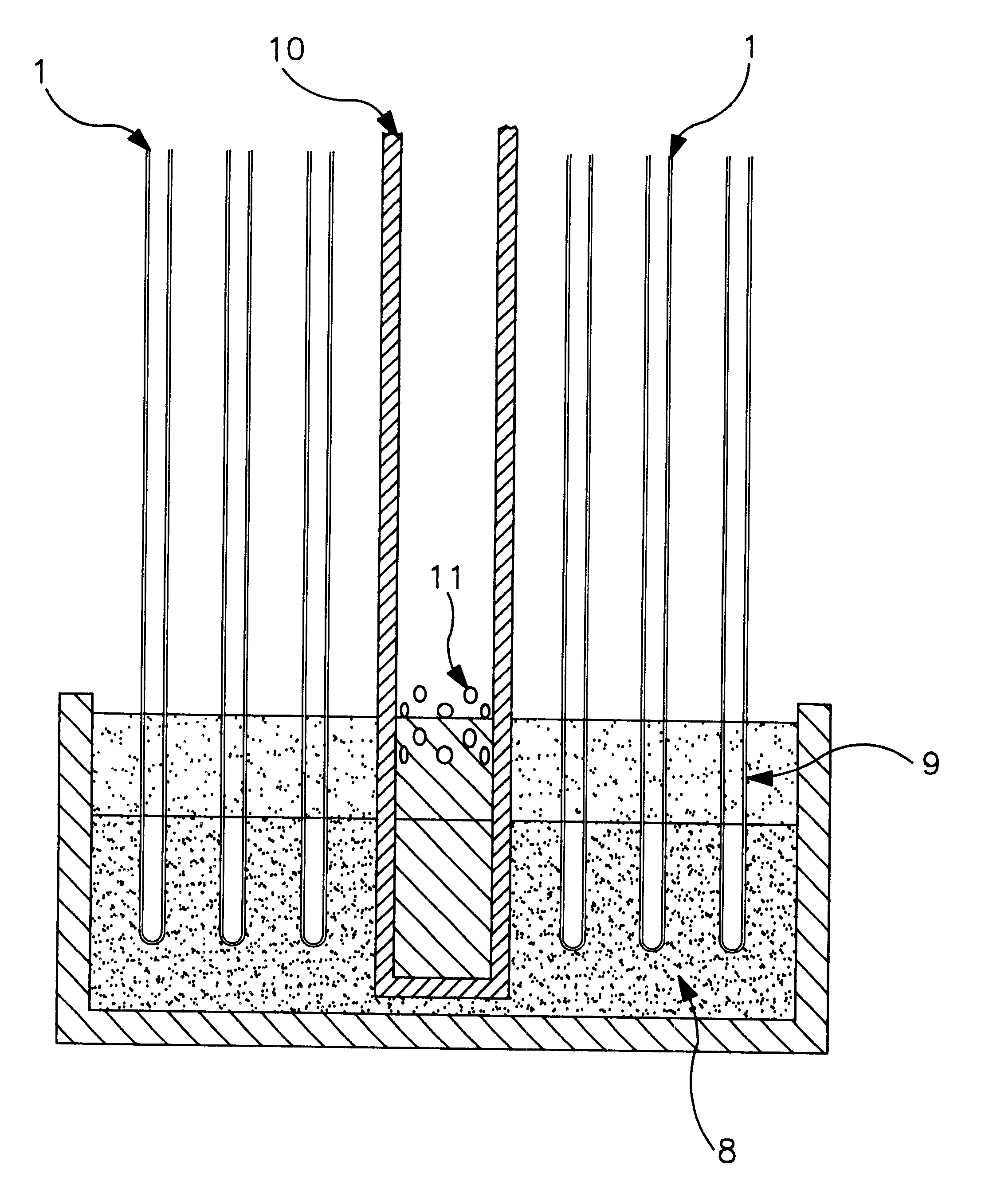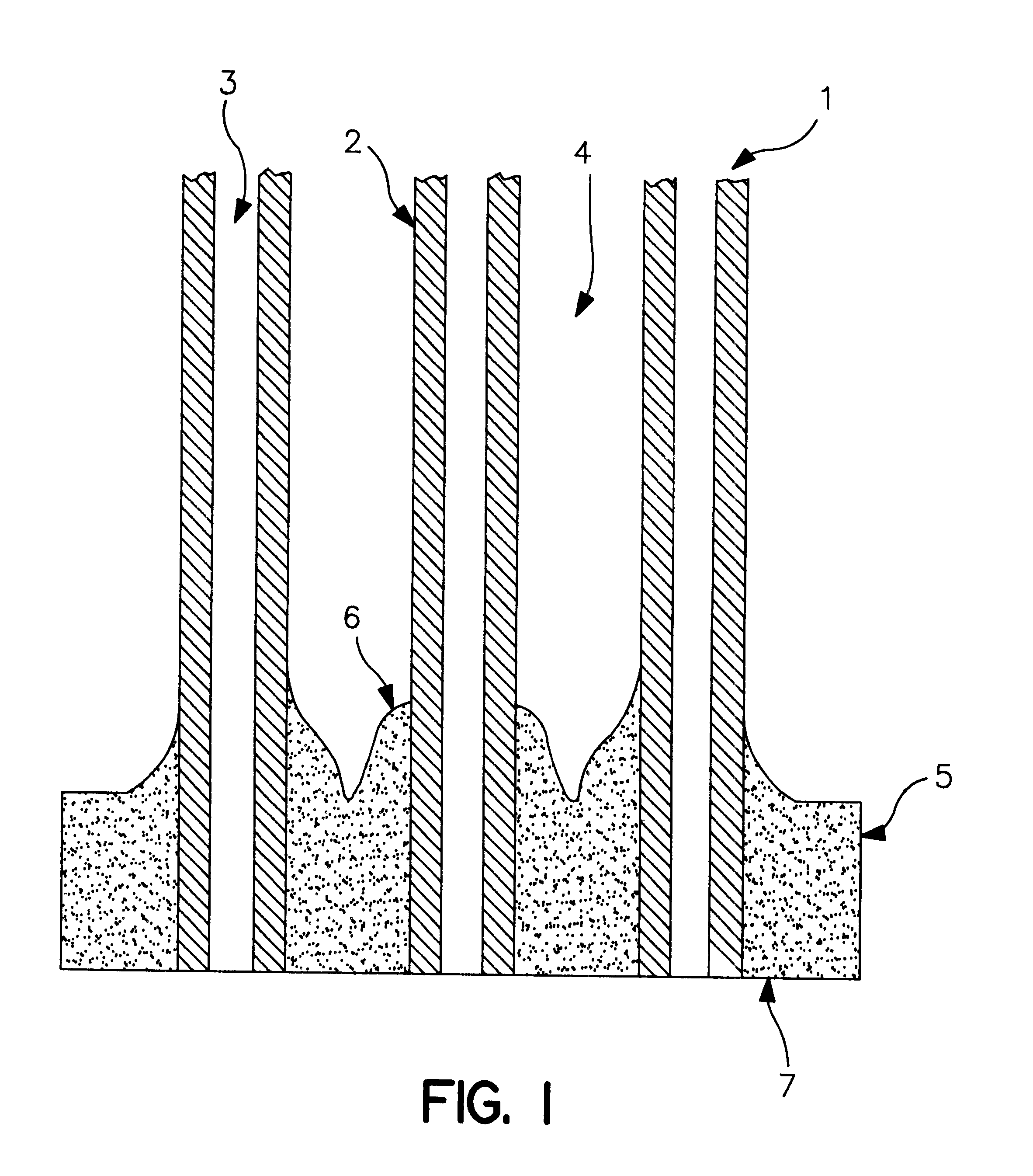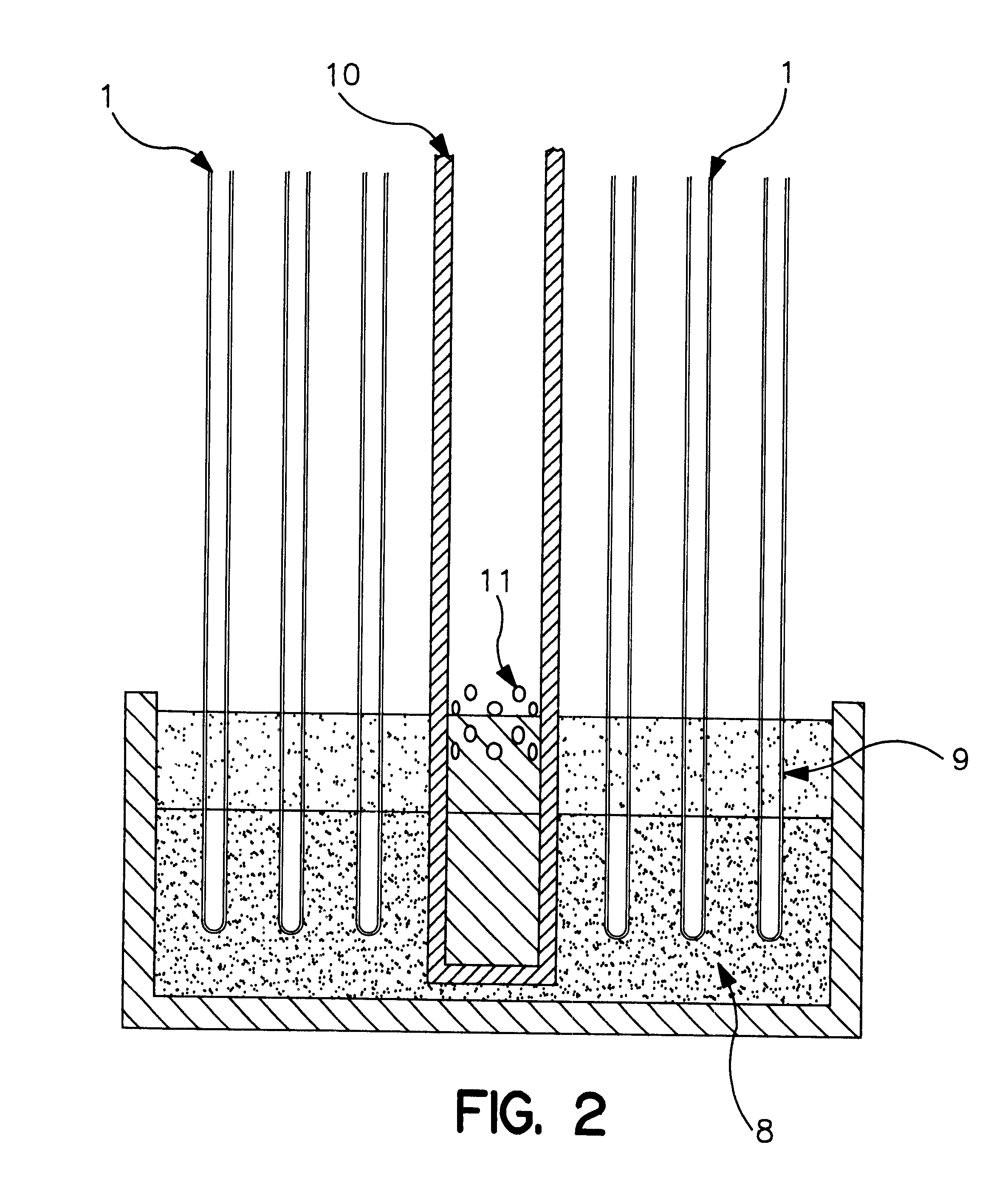Hollow fiber membrane tubesheets of variable epoxy composition and hardness
a technology of epoxy composition and hardness, which is applied in the direction of dispersed particle separation, chemistry apparatus and processes, and separation processes, etc., can solve the problems of difficult to meet all these requirements in a single component tubesheet material, difficulty in forming a single-component tubesheet, and poor adhesion and flexibility characteristics of softer materials, etc., to achieve high strength and durability.
- Summary
- Abstract
- Description
- Claims
- Application Information
AI Technical Summary
Benefits of technology
Problems solved by technology
Method used
Image
Examples
example 2
Into a mold of 3.2 cm depth and 20.3 cm diameter was poured 303 g of a first epoxy compound consisting of Hardman EPOCAP.RTM. 17446. A bundle of approximately 70,000 hollow fiber membranes was lowered into the mold such that the ends of the fibers were encapsulated to a depth of about 1.2 cm. This epoxy was gelled for a period of 3 hours and 45 minutes at a temperature of 23.degree. C., after which time a second epoxy compound was poured on top of the first compound. This second compound was added in the amount of 740 g, which was sufficient to cover completely the first epoxy. This second epoxy resin system consisted of a bisphenol F resin known as EPON.RTM. 862, an aliphatic diglycidyl ether diluent known as HELOXY.RTM. 67, and a polyamido-amine hardener known as EPI-CURE.RTM. 3046. All of these materials are commercially available from Shell Chemical Inc.
These components were mixed in a weight ratio of 50 / 50 / 100 resin / diluent / hardener to produce a compound with a viscosity of 158...
example 3
A bundle of approximately 70,000 hollow fiber membranes was potted in a 3.2 cm depth, 20.3 cm diameter mold with a first epoxy casting compound composed of Hardman EPOCAP.RTM. 17446. This compound was cured for 2 hours at 120.degree. C. to a Shore D hardness of 90. A second epoxy compound was applied to the periphery of the bundle and was allowed to wick into the center of the bundle. This second epoxy resin system consisted of EPON.RTM. 862, HELOXY.RTM. 67, and EPI-CURE.RTM. 3046. These components were mixed in a weight ratio of 50 / 50 / 100 resin / diluent / hardener to produce this portion of the tubesheet. The second epoxy, which was cured for 16 hours at 80.degree. C. to a Shore D hardness of 36, substantially covered the first epoxy. The weight ratio of the hard epoxy to soft epoxy at each potted end of the bundle was approximately 10:1.
Thus, hollow fiber membrane modules with tubesheets composed of a plurality of epoxy compounds were produced. Modules made according to this process ...
example 4
A hollow fiber membrane module was constructed with the same lot of membrane utilized in Comparative Example 4. This module was potted according to the method described in Example 3. Thus this module had tubesheets that were comprised of about 10 parts of hard epoxy and 1 part of soft epoxy. This module was tested for air separation properties according to the conditions used in Comparative Example 4. It was determined that this module had a separation factor for O.sub.2 / N.sub.2 of 7.57 at an identical permeation rate to the module in Comparative Example 4. Thus, the module prepared according to the teachings of the present invention had a 14% higher separation factor than the module made according to the prior art with no loss in O.sub.2 permeation rate.
PUM
| Property | Measurement | Unit |
|---|---|---|
| temperature | aaaaa | aaaaa |
| initial viscosity | aaaaa | aaaaa |
| permeate pressure | aaaaa | aaaaa |
Abstract
Description
Claims
Application Information
 Login to View More
Login to View More - R&D
- Intellectual Property
- Life Sciences
- Materials
- Tech Scout
- Unparalleled Data Quality
- Higher Quality Content
- 60% Fewer Hallucinations
Browse by: Latest US Patents, China's latest patents, Technical Efficacy Thesaurus, Application Domain, Technology Topic, Popular Technical Reports.
© 2025 PatSnap. All rights reserved.Legal|Privacy policy|Modern Slavery Act Transparency Statement|Sitemap|About US| Contact US: help@patsnap.com



